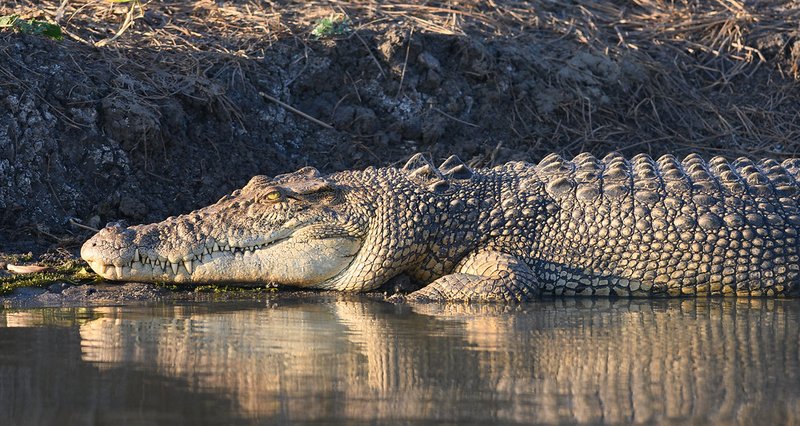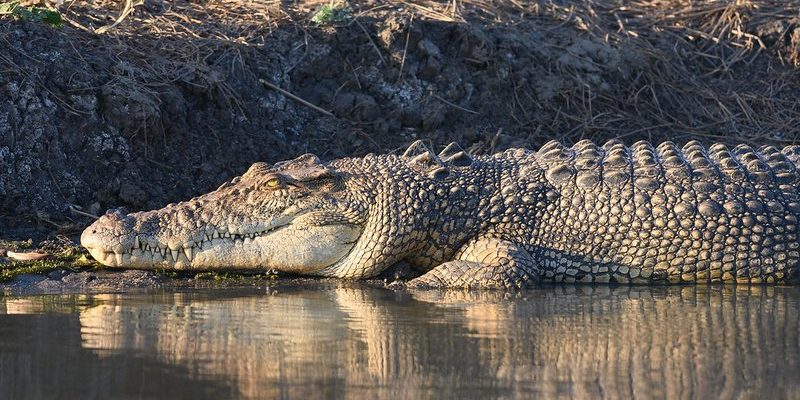
Think of a saltwater crocodile as nature’s ultimate survivor. These fascinating animals have been around for millions of years, perfectly adapted to their environment. But while they might look like something out of a documentary, being face-to-face with one can be a shocking experience. So, let’s dive into the critical steps to take if you ever find yourself in this intense scenario.
Understanding Saltwater Crocodiles
First off, it’s essential to recognize what you’re dealing with. Saltwater crocodiles, or “salties,” can grow up to 23 feet long and weigh over 2,200 pounds. They’re found in brackish and saltwater environments, from tropical regions of Africa to Australia and Southeast Asia.
One key characteristic is their attitude toward territory. Saltwater crocodiles are incredibly territorial and can be aggressive if they feel threatened. So, if you spot one in the wild, it’s crucial to understand their behavior before making your next move.
You might be wondering what makes them so fascinating yet dangerous. Their powerful jaws can crush bones, and they have exceptional camouflage, which helps them sneak up on prey. When you think about it, they are like ancient warriors, blending into their environment and waiting for the perfect moment to strike.
Staying Calm and Assessing the Situation
If you’ve spotted a saltwater crocodile, the first thing you need to do is stay calm. I know, easier said than done. But panicking won’t help you. Take a deep breath and assess your surroundings. Are you near water? Is the crocodile moving toward you, or is it just lounging on the shore?
Your next steps depend significantly on the crocodile’s behavior. If it seems relaxed and isn’t paying attention to you, it may be best to slowly back away without making sudden movements.
If the crocodile is in the water, *don’t* get too close. Remember, they’re faster in the water than you could ever be. Think of them as a living torpedo, fast and powerful. If you find yourself in a boat, it’s crucial to keep your distance and avoid any sudden movements that might provoke it.
Back Away Slowly
So, you’ve spotted the crocodile, and you’re keeping your cool. Now what? It’s time to think about getting out of there. When you’re backing away, do it gradually. Sudden movements can catch the crocodile’s interest, and you really don’t want that.
Imagine you’re in a movie, trying to escape from a dinosaur. You wouldn’t run or yell; you’d carefully plot your path. The same applies here.
While backing away, keep your eyes on the crocodile. Even if it seems uninterested, it can quickly change its mind. Watch its body language. If it starts to move toward you, it’s time to accelerate your retreat—while still trying to remain calm.
Do Not Try to Interact
It might be tempting to snap a quick selfie or get a closer look, but let me explain why that’s a terrible idea. Saltwater crocodiles are wild animals and can act unpredictably. Even if it looks docile, it’s best to keep your distance.
Think about it this way: you wouldn’t try to pet a lion just because it looks sleepy, right? The same principle applies here. Saltwater crocodiles may appear slow and lazy basking in the sun, but they can burst into action with startling speed.
Instead, take a mental snapshot, and save the photos for a safe distance. The best interactions with wildlife come from observing, not interfering.
Alert Authorities or Local Experts
If you encounter a saltwater crocodile, it’s essential to notify local authorities or wildlife experts as soon as possible. This ensures your safety and helps them monitor the crocodile’s behavior.
Most areas with known crocodile populations will have guidelines for dealing with these encounters. You might see signs warning people to stay away from water edges, but if you find yourself close to one, reporting the sighting is essential for everyone’s safety.
Local experts are trained to handle these situations. They know how to relocate or assess the crocodile safely. Don’t hesitate to call them; think of it as calling in the pros when you face a crisis.
Recognizing Signs of Saltwater Crocodiles
Being aware of your surroundings is key to avoiding a dangerous encounter. Saltwater crocodiles prefer secluded, muddy waters and can often be found near river mouths, estuaries, and mangroves.
Here are some signs to look out for:
- Tracks: Look for rounded footprints near the water’s edge.
- Splashing: If you hear unusual splashing noises in the water, it could indicate a crocodile nearby.
- Sunbathing: They often bask in the sun, so spotting one lounging on the bank is a clear sign.
By recognizing these signs, you can be proactive about your safety and avoid unexpected encounters.
Encountering a saltwater crocodile is undoubtedly a heart-pounding experience. But with the right knowledge and precautions, you can navigate the situation safely. Respect for wildlife is essential—these creatures have been thriving in their environments long before us.
Next time you’re out exploring nature, remember that it’s their home, too. Keep your distance, stay calm, and don’t hesitate to reach out for help if needed. After all, living harmoniously with nature is not just about avoiding danger; it’s about appreciating the wild world around us.

